
|
Astronomy Picture Of the Day (APOD)
 Massive Nearby Spiral Galaxy NGC 2841
Massive Nearby Spiral Galaxy NGC 2841
27.04.2015
It is one of the more massive galaxies known. A mere 46 million light-years distant, spiral galaxy NGC 2841 can be found in the northern constellation of Ursa Major. This sharp view of the gorgeous island universe shows off a striking yellow nucleus and galactic disk.
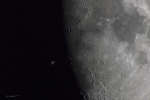 Space Station over Lunar Terminator
Space Station over Lunar Terminator
26.04.2015
What's that in front of the Moon? It's the International Space Station. Using precise timing, the Earth-orbiting space platform was photographed in front of a partially lit Moon last year. The featured image was taken from Madrid, Spain with an exposure time of only 1/1000 of a second.
 Planetary Nebula Mz3: The Ant Nebula
Planetary Nebula Mz3: The Ant Nebula
25.04.2015
Why isn't this ant a big sphere? Planetary nebula Mz3 is being cast off by a star similar to our Sun that is, surely, round. Why then would the gas that is streaming away create an ant-shaped nebula that is distinctly not round?
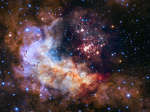 Cluster and Starforming Region Westerlund 2
Cluster and Starforming Region Westerlund 2
24.04.2015
Located 20,000 light-years away in the constellation Carina, the young cluster and starforming region Westerlund 2 fills this cosmic scene. Captured with Hubble's cameras in near-infrared and visible light, the stunning image is a celebration of the 25th anniversary of the launch of the Hubble Space Telescope on April 24, 1990.
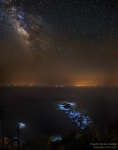 Blue Tears and the Milky Way
Blue Tears and the Milky Way
23.04.2015
Lapping at rocks along the shore of the Island of Nangan, Taiwan, planet Earth, waves are infused with a subtle blue light in this sea and night skyscape. Composed of a series of long exposures made on April 16 the image captures the faint glow from Noctiluca scintillans.
 Meteor in the Milky Way
Meteor in the Milky Way
22.04.2015
Earth's April showers include the Lyrid Meteor Shower, observed for more than 2,000 years when the planet makes its annual passage through the dust stream of long-period Comet Thatcher. A grain...
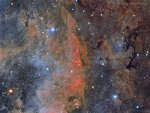 Colorful Star Clouds in Cygnus
Colorful Star Clouds in Cygnus
21.04.2015
Stars can form in colorful surroundings. Featured here is a star forming region rich in glowing gas and dark dust toward the constellation of the Swan (Cygnus), near the bright star Sadr. This region, which spans about 50 light years, is part of the Gamma Cygni nebula which lies about 1,800 light years distant.
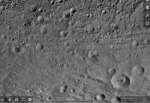 Vesta Trek: A Digital Model of Asteroid Vesta
Vesta Trek: A Digital Model of Asteroid Vesta
20.04.2015
You can explore asteroid Vesta. Recently, NASA's robotic spaceship Dawn visited Vesta, the second largest object in our Solar System's main asteroid belt, which lies between Mars and Jupiter. During a year-long stopover, Dawn's cameras photographed Vesta's entire surface, documenting all of the minor planet's major mountains and craters.
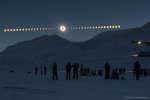 Total Solar Eclipse over Svalbard
Total Solar Eclipse over Svalbard
19.04.2015
Going, going, gone. That was the feeling in Svalbard, Norway last month during a total eclipse of the Sun by the Moon. In the featured image, the eclipse was captured every three minutes and then digitally merged with a foreground frame taken from the same location.
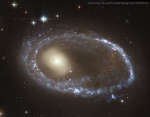 Ring Galaxy AM 0644 741 from Hubble
Ring Galaxy AM 0644 741 from Hubble
18.04.2015
How could a galaxy become shaped like a ring? The rim of the blue galaxy pictured on the right is an immense ring-like structure 150,000 light years in diameter composed of newly formed, extremely bright, massive stars.
|
January February March April May June July August September October November December |
|||||||||||||||||||||||||||||||||||||||||||||||||